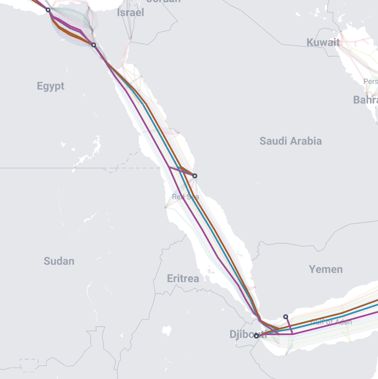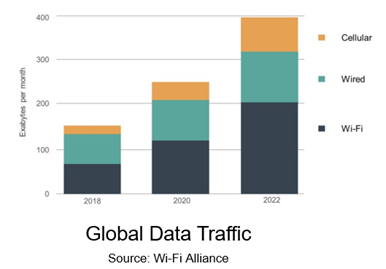Articles
Sample Articles from Bob Wallace.
Read More about Bob.
SASE Architecture: A Checklist for SASE-savvy Businesses
- Details
- Published on 31 March 2024

(Credit: Liubomir Paut-Fluerasu / Alamy Stock Photo)
SASE can provide secure and efficient access to cloud-based services and resources for users, regardless of their location. Follow this checklist to attain this goal.
Secure access service edge (SASE) provides companies a centralized means to manage, monitor, and optimize their wide-area networks, SASE solutions provide the flexibility to protect corporate assets, remote offices, and home-based and mobile employees, as security threats continue to evolve and rapidly increase.
Introduction to SASE Architecture
SASE is an architecture that provides converged network and security as a service with an array of cloud-based capabilities that can be located where and used when they are needed.
As such, SASE expands the perimeter to include all resources, regardless of their location or device. It provides a single and consistent security policy spanning all network and application assets.
Read more: SASE Architecture: A Checklist for SASE-savvy Businesses
Akamai to Deploy Advanced AI Across its Global Edge Network
- Details
- Published on 31 March 2024

(Credit: Denis Putilov / Alamy Stock Photo)
With partner Neural Magic's software, potential user benefits may include lower latency, higher service levels, and faster response times.
Cloud and content delivery network Akamai Technologies last week teamed with Neural Magic to deploy advanced artificial intelligence (AI) software across its global edge server network.
The duo's efforts could provide businesses with lower latency, higher service levels, and faster response times. Adding the software could enable use cases such as AI inference, immersive retail, and spatial computing.
Long ago, Akamai built a distributed global network comprised of edge servers containing cached content located close to users to cut the time and boost the performance of delivering rich media such as streaming video. Now, the provider is using the same network to provide Neural Magic's AI much closer to the sources of user data.
The company said it intends to “supercharge” its deep learning capabilities by leveraging Neural Magic’s software, which enables AI workloads to be run more efficiently on traditional central processing unit-based servers, as opposed to more advanced hardware powered by graphics processing units (GPUs).
Potential Business Benefits of AI at the Edge
One expert sees several potential benefits to using Akamai’s content delivery network (CDN) business customers with Neural Magic’s AI acceleration software.
“This could potentially lower the cost of service and still meet the requirements for the AI workloads,” said Baron Fung, Senior Research Director at Dell’Oro Group, a global telecom market research and consulting firm. “Lower cost can be achieved because the service provider (Akamai) can use general-purpose servers that uses traditional infrastructure, rather than expensive dedicated AI/GPU servers and infrastructure.”
Potential applications benefits are possible "because these nodes are situated at the network edge, close to where the user or machines are located, faster response time of applications for customers could be realized, especially for workloads that are AI related."
Higher service levels could be attained. “Because of the scalable nature of the solution, new CDN nodes suitable for AI workloads could be scaled quickly in high-demand regions.”
Running AI Workloads Close to Data Sources
In February, Akamai launched its Generalized Edge Compute (GECKO) initiative which focused on embedding cloud computing capabilities in the provider’s massive edge network. The initiative will efficiently support modern applications and workloads, wrote Zacks Investment Research. “These workloads will span a wide range of next generation use cases such as AI inference, immersive retail, and spatial computing.”
Related articles:
Avoid Buyer's Regret: Top Tips for Assessing Infrastructure Provider Health Before Purchases and Contract Extensions
- Details
- Published on 31 March 2024

(Credit: Michael Borgers / Alamy Stock Photo)
Avoid Buyer's Regret: Top Tips for Assessing Infrastructure Provider Health Before Purchases and Contract Extensions
With large enterprise infrastructure purchases for services, including SASE, SD-WAN, wireless, and more, on the line, the tech behind the services may be proven, but can the provider deliver? Is the provider having business problems? What can buyers do to avoid regret or devastating mistakes?
“Enterprises are going to have to prepare for a lot of vendor consolidation over the course of the next two years and then service provider consolidation through the end of the decade,” explained Jeff Heynen, VP of Broadband Access and Home Networking at Dell’Oro Group, a global market research and analysis firm. “Right now, because operators are cutting back on their spending, vendors are retrenching and looking to cut costs. Some are looking to shed parts of their business to focus on their core operations.”
A Provider Health Checklist
Here is a list of items to check to help determine how a potential tech partner is faring business-wise.
Strategic reviews: Rarely announced publicly, in favor of behind-the-scenes activity, these crucial undertakings often result in substantial changes in the way a service provider or vendor determines its product and staffing priorities. The results can lead to phasing out products and business units and result in several of the actions listed below.
Project cutbacks and selloffs: One major infrastructure player confirmed late last year that it was cutting back its fiber service deployment markedly and sold parts of its tech assets, including CDN customers, to a major player in the sector. It is best to know of these actions as soon as possible before they are announced publicly.
Layoffs: Staff reductions can also signal problems as these cost-cutting efforts are often justified as rightsizing. The goal here is to determine why they are needed. Is your provider outsourcing a potentially crucial function, such as service and support, to a third party or preparing to drop a product line? Layoffs are expected after a merger or acquisition to eliminate duplication of efforts. But how will they affect your business?
Push past the stated percentage of total staff being cut to other vital details, such as what areas will be drawn down. Do they include sales, service, support, marketing, product development, engineering, or management?
Finances: Try to keep pace with your vendor/provider’s financial health. This is also essential before greenlighting a big ticket and/or big project with a new partner. Check out the provider’s annual and quarterly numbers – with help from your internal financial experts. Total revenue is often the most touted number discussed, but CapEx and profit growth are more important. Wall Street financial analyst reports can help.
Inactivity: No news is not always good news. Look for news of new customer wins, product enhancements, and partnerships to explore new areas. Filling gaps in products/technologies is also good news. Contacts developed inside your providers can be a priceless resource, more so if they depart the company.<?
Ownership: Are any of the vendors or operators you are considering for a major tech advancement project owned/run by private equity (PE) firms? Many regional fiber operators saw large PE investments or purchases in 2023. Green is good, but be aware that these firms typically acquire firms, boost the high performing assets, and shed much or all of underperforming or struggling assets before a sale. A transition can be rocky and usually includes a change of senior management.
Timing: Do any of the providers you are considering have incidences or a history of delivering products and services late/missing deadlines or TBD? The tech trade press tries to keep track of promised delivery and actual shipment. One Massachusetts business was excited to receive the newest networking gear from a prominent vendor until the boxes arrived empty.
Market research and analysis: These firms track industry sectors, subsectors, and vendors from startups to near duopolies on an ongoing, quarterly, or annual basis. Some rank players by leaders using business performance and often know vendors better than businesses looking for a solution provider. These firms also identify buying and tech trends (in the U.S. and internationally) that can be invaluable for your pre-purchase.
Vertical industry groups and associations: These organizations and their associated events provide an opportunity to meet with other companies that face business and tech challenges similar to your company's. Attendees often discuss the experiences of vendors and operators they have done business with or plan to. The takes of other users and this environment can be more useful than vendor-held annual gatherings as they are more focused, covering the IT and business needs - and more independent.
A Final Word on Picking an Infrastructure Provider
Learn which signs of provider health to be concerned about before making a commitment to a potential long-term partner to help your enterprise change the way it does business for years to come. Missing signals could result in a decision you may later regret.
Related articles:
What is Network-as-a-Service (NaaS)? A Complete Guide
- Details
- Published on 18 March 2024

(Credit: JL / Alamy Stock Photo)
Network-as-a-Service (NaaS) offers a flexible, cost-effective, and efficient way for businesses to manage their networking needs. Here is an overview to guide your selection and use of NaaS.
Network-as-a-Service (NaaS) is much more than an emerging subscription model for corporate networks.
With NaaS, the provider is responsible for buying and managing the routers, switches, load balancers, firewalls, and other security devices that once made up the infrastructure of costly, resource-draining, and limited-flexibility private networks.
What Preceded NaaS?
For decades, the traditional solution for wide-area networks has been private networks whereby enterprises bought, managed, and maintained networking equipment and secured connections serving onsite data centers. That practice was eclipsed by the more flexible and cost-efficient cloud architecture.
Then came Network-as-a-Service (NaaS), an emerging option intended to be provided across a standards-based automated ecosystem to help organizations meet fluctuating data needs and achieve business goals.
Soaring data traffic, driven by the broadening use of 5G, IoT, and video streaming (and the rapid emergence of AI), has given rise to the newer and more flexible WAN approach. Beyond not buying, managing, or maintaining network equipment, bandwidth, and specialized talent, NaaS offers many capabilities and functionality.
How Network as a Service Works
The MEF, an industry association and advocate for NaaS and friends, describes a full-bodied offering as "a new-paradigm solution by combining on-demand connectivity, application assurance, cybersecurity, and multi-cloud-based services delivered across a standards-based automated ecosystem of partners."
Of great importance is the MEF’s development of a much-needed NaaS Industry Blueprint and its work on open APIs. Network-as-a-Service providers need these APIs to automate common functions like order processing, service provisioning, and security. They can make it easier for an enterprise to order and use NaaS services.
Read more: What is Network-as-a-Service (NaaS)? A Complete Guide
How Undersea Cable Cuts are Making Global Business Increasingly Risky
- Details
- Published on 18 March 2024

(Credit: Wilf Doyle / Alamy Stock Photo)
With no viable alternatives, governments, enterprises, and operators team to tackle longstanding undersea cable resiliency challenges.
Is network resiliency able to reach beyond five nines and SLAs for enterprises seeking always-on services?
Given recent headlines and discussion in the wake of undersea cable cuts in the Red Sea, the answer is still no for multinationals. The situation is best described as business interruption as usual.
On Saturday, February 24, three different cables were reported to have suffered faults:
These international systems connect far-apart states like South Africa, the United Kingdom, and China. The faults off the coast of Yemen need to be repaired. The work is tough to do in a narrow, heavily traveled shipping lane that doubles as a war zone with a concentration of submarine cables on the sea floor.
Fighting in the Middle East is a concern as enterprises and the telecom industry rely on undersea cables to carry the bulk of their intercontinental traffic.
Since late February, three more faults in the region have been reported, according to TeleGeography, a research firm that builds and maintains massive data sets that are used to monitor, forecast, and map the telecommunications industry. One report has a ship dragging an anchor as the culprit, which the firm claims is the second most frequent cause behind cuts/faults of these business and communications lifelines.

Three cables with faults in the Red Sea from TeleGeography's Submarine Cable Map. Note: The cable map illustrates the topology of cables but does not show the physical path.
The cause of the undersea cable disruption is still uncertain
Whodunnit? Since then, no open-source evidence has come out to support the claim that Houthis, part of a Yemen civil war, were responsible. "But here's one thing we do know: accidents happen all the time," noted Tim Stronge, Research VP at TeleGeography, in a March 5 advisory. "On average, two cables suffer faults somewhere in the world every week!”
The research firm tracks 574 active and planned submarine cables as of early 2024.
Suspicious activity or not?
Stronge does not believe the three almost simultaneous cable faults are overly suspicious.
“Geological features or permitting issues have occasionally forced installers to lay different cables in close proximity to each other,” he explained. Such a situation increases the danger of a multi-cable fault.
In 2012, multiple cables suffered faults off the coast of Alexandria, Egypt. “Initial speculation blamed saboteurs, but many in the submarine cable industry now believe that a single ship dragging its anchor was the cause.”
Is it time to panic?
Although the Red Sea cables carry 90% of Europe-Asia communications flow through them, operators have built a lot of redundancy into the network. The ability to reroute traffic is increasingly available.
There are fourteen cables already laid on the Red Sea. Even if three are down, eleven remain, wrote Stronge. “Data destined for damaged cables may be rerouted southward around the Cape of Good Hope or eastward through Asia and the United States.”
Tougher times ahead for undersea cable industry
Houthi attacks on ships make life tougher for the undersea cable industry, which could hurt enterprises.
- Vessels that are sinking or sunken present new underwater hazards to cables and cable ships. The cables typically lie on the ocean floor.
- Shipping attacks have caused marine insurance rates to spike.
- Combined, these two may make the installation of new cables in the Red Sea too prohibitive and make repair risky.
Items for governments to act on
Governments are the ones on the hook for the long-term security of subsea cables. The International Cable Protection Committee (ICPC) has created a list of 16 action items.
ICPC membership comprises governmental administrations and commercial companies that own or operate submarine telecommunications or power cables, as well as other companies that have an interest in the submarine cable industry—including most of the world’s major cable system owners and cable ship operators. The group says the primary purpose of the ICPC is to help its members improve the security of undersea cables by providing a forum in which relevant technical, legal, and environmental information can be exchanged. U.S. members include JP Morgan Chase, Wells Fargo, University of Hawaii, U.S. Navy, Johns Hopkins University, AT&T and Ciena.
One priority, which is a work in progress, is changing rules and regulations to open new seabed lanes and landing zones for cables. Having physically diverse zones provides options in locating where cables come ashore.
Flirting with disaster
“Some government regulations (such as environmental protection) may unintentionally herd cables into narrow corridors,” explained Stronge. “As we’ve seen time and time again, a lack of physical diversity invites disaster.”
Seeking alternatives
When it comes to alternatives to undersea cables, the cupboard is bare. Satellite connections are not fast or large enough to carry the traffic load on submarine pipes. 5G is not mature enough to help.
One approach is to install cables over alternative routes. As we reported in December, the SeaMeWe-6 cable project seeks to construct a cable that links Asia, the Middle East, and Europe via a route through India rather than the Red Sea. The article noted that the U.S. “snatched away” control of the project from China due to the importance of having alternative paths to send data.
Related articles:
Why Businesses Should Watch Wi-Fi-7 Closely
- Details
- Published on 18 March 2024

(Credit: Denys Rudyi / Alamy Stock Photo)
Industry experts predict a rapid emergence for the latest Wi-Fi version. Streaming and dense device use cases are seen as fits.
With wireless traffic far exceeding wireline data, it seems like a safe bet that the emergence of Wi-Fi 7 will take and hold the attention of enterprises and carriers looking to put the latest Wi-Fi products to work.
Buoyed by the recently launched Wi-Fi 7 Certified product certification program by the Wi-Fi Alliance, approved products will likely be embraced as part of the most compelling segment of the Internet access market this year.
“With the Wi-Fi Alliance recently announcing the opening of certification testing for Wi-Fi 7 products, don’t be surprised to see dozens of Wi-Fi 7 residential routers and broadband CPE models being deployed by operators by the end of this year,” explained Jeff Heynen, VP Broadband Access and Home Networking at Dell’Oro Group, a global market research firm. "Early gateway models, though pricey, have already been introduced to the market and will become much more widely available this spring and then well before the holiday season."
Why the rise of Wi-Fi 7?
Wi-Fi 7 products offer significantly more performance for enterprise users and can support more users in denser environments compared to Wi-Fi 6. It is pitched as a match for streaming applications and is able to handle more users per Access Point (AP), which translates into fewer devices to manage and maintain in deployments.
Wi-Fi 7 is attractive for many reasons. The first is its flexibility. The IEEE standard 802.11be works with several radio frequency bands, including 2.4GHz, 5GHz, and 6GHz. Its speed is another selling point, as it provides links at up to 40,000 M bit/sec. "When using Wi-Fi 7, the quality and resolution of video streaming are improved by 16 spatial streams and Multiple Input Multiple Output (MIMO) technology," according to Mordor Intelligence. Another feature of Wi-Fi 7, Hybrid Automatic Repeat Request (HARQ), enables multiple link adaptation.
Also of importance is that WI-Fi-7 devices are compatible with its most recent predecessor, Wi-Fi 6E.
Operators to Embrace Wi-Fi 7
There is more to Wi-Fi 7’s rapid emergence than simply technical features and advanced capabilities.
“Operators can’t wait to deploy Wi-Fi 7 products to help differentiate themselves in increasingly crowded broadband markets and to eliminate much of the confusion in the market with the coexistence of Wi-Fi 6 and Wi-Fi 6E,” explained Heynen.
While Wi-Fi 6E offers specific benefits over its Wi-Fi 6 predecessor, the latter has been implemented by entertainment and sports venue owners to best service fans in the stands who are increasingly armed with powerful mobile devices equipped with team and concessions apps. Pro sports teams are using Wi-Fi 6 to collect data from fans, which is used to provide each attendee with a more personalized experience.
Higher Performance Wi-Fi 7 Driven by Soaring Traffic
The amount of traffic being carried over Wi-Fi networks globally has roughly quadrupled in four years. In contrast, traffic over wired networks has only grown modestly during that same period, according to the Wi-Fi Alliance.

Early Wi-Fi 7 Products at Mobile World Congress
Last year saw chip, module, and device vendors, including Qualcomm, Broadcom, Intel, MediaTek, and CommScope, roll out products. Now, the Wi-Fi Alliance is forecasting more than 233 million Wi-Fi 7 devices to enter the market in 2024, growing to 2.1 billion devices by 2028.
Keysight Technologies plans to show its Wi-Fi 7 wireless connectivity test platform at the Mobile World Congress 2024 (MWC) in Barcelona later this month.
Wi-Fi 7 Certified Program to Drive Deployment
Just last month, the Wi-Fi Alliance launched the Wi-Fi 7 Certified program, which is designed to approve an interoperable device that provides a certain set of required capabilities. It is unclear if products released before certification will be compliant or adjusted to be compliant. As a resource for operators and business users (and those working from home), the alliance has created a product finder resource on its website where folks can type in a product name and maker to see if it’s certified.
The Bottom Line on Wi-Fi 7
Streaming-friendly features, frequency flexibility, and the bandwidth to address dense device environments portend to fuel the emergence of Wi-Fi 7. The Wi-Fi 7 market was valued at $875 million in the current year and is expected to reach $6.07 billion in the next five years, registering a CAGR of 47.32% over the forecast period, according to Mordor Intelligence.
The Wi-Fi 7 space is worth watching – closely - for enterprises and operators.
Related articles:
